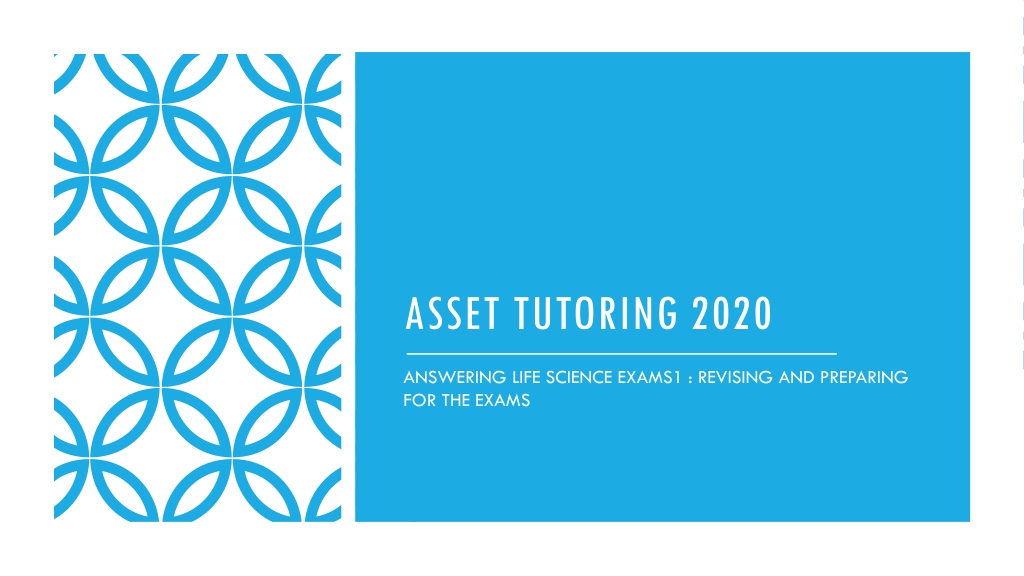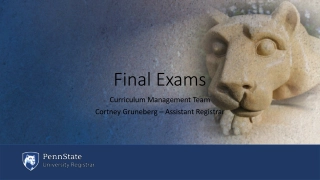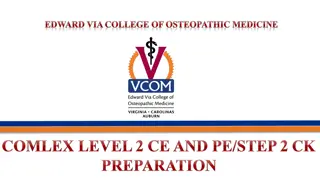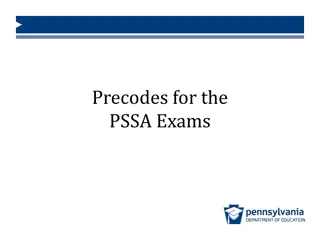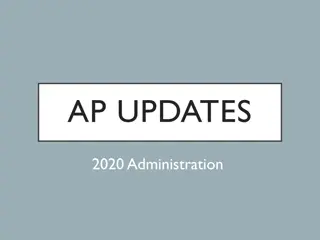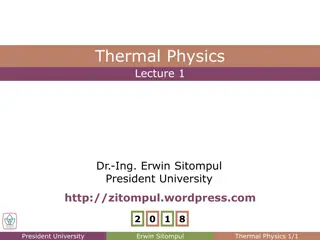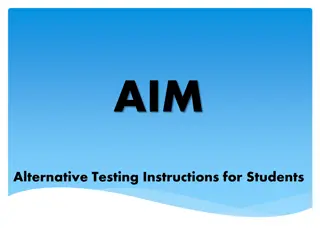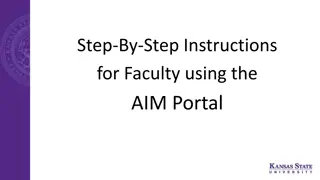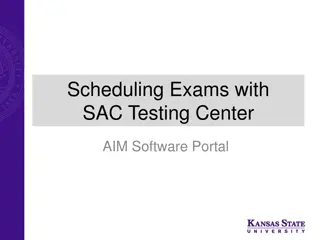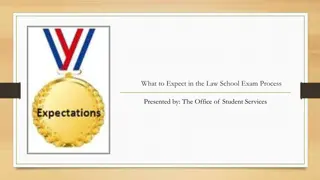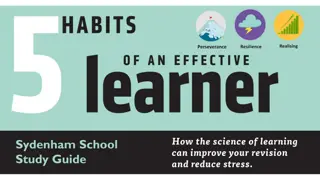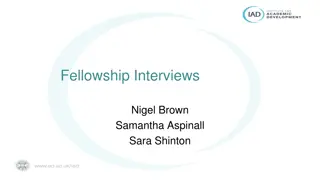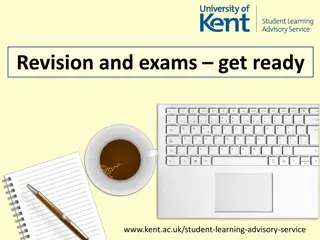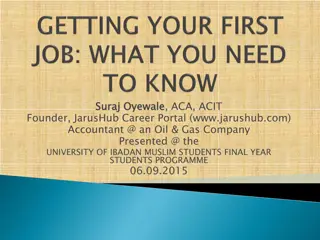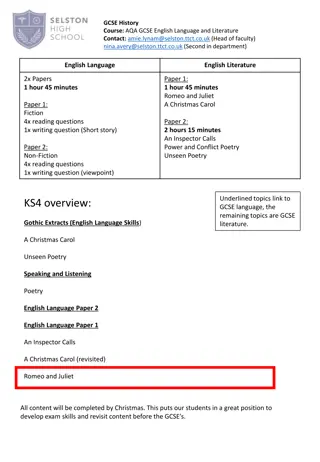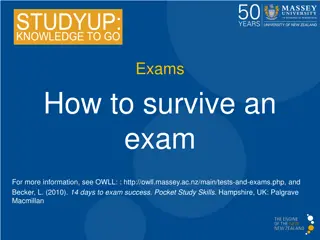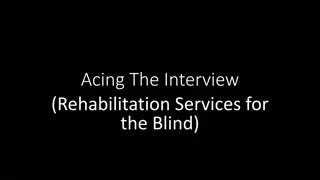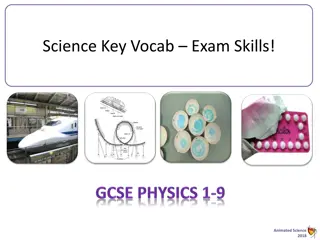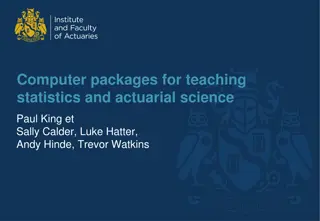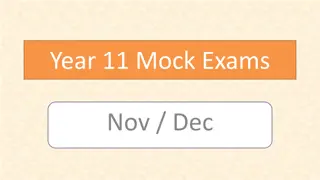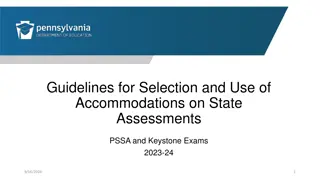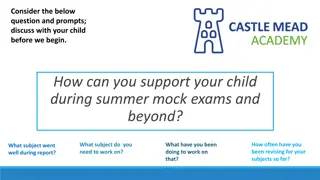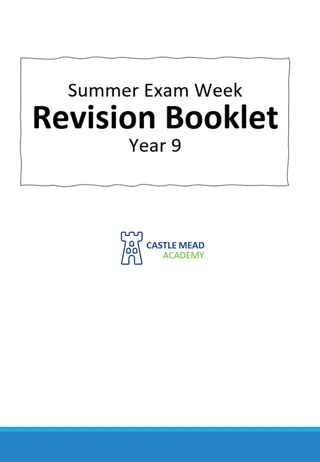Effective Strategies for Acing Life Science Exams
Prepare for your Life Science exams by familiarizing yourself with the exam structure, types of questions, and key topics. Utilize cognitive levels in your studying, including knowledge, comprehension, application, analysis, synthesis, and evaluation. Enhance your revision process by making summaries, studying with a buddy, and testing each other on content. Watch educational videos, draw diagrams, and aim to understand all the provided materials thoroughly for both Paper 1 and Paper 2.
Download Presentation

Please find below an Image/Link to download the presentation.
The content on the website is provided AS IS for your information and personal use only. It may not be sold, licensed, or shared on other websites without obtaining consent from the author. Download presentation by click this link. If you encounter any issues during the download, it is possible that the publisher has removed the file from their server.
E N D
Presentation Transcript
ASSET TUTORING 2020 ANSWERING LIFE SCIENCE EXAMS1 : REVISING AND PREPARING FOR THE EXAMS
2 x papers (Paper 1 and Paper 2) 150 marks each 2 hours each EXAM FORMAT 2020 Section A Type of questions Marks Short answer, objective questions such as MCQ, terminology and matching terms - a mix of content and a few interpretation questions 50 A variety of questions types but mostly interpretive questions 2 questions of 40 marks each, divided into 3 4 subsections B 2 x 40 = 80 C A mini-essay mainly content based 20
SUMMARY: FINAL EXAMINATION STRUCTURE FINAL LIFE SCIENCE EXAMS Friday 27 Nov. Life Science Paper 1 Monday 30 Nov. Life Science Paper 2 PAPER 1 MARKS 11 PAPER 2 MARKS 27 Meiosis DNA: Code of life Reproduction in vertebrates 6 Meiosis 12 Human reproduction 31 Genetics and inheritance 45 Responding to the environment (Humans) Human endocrine system 40 Evolution (Natural Selection AND Human Origins) 66 15 Homeostasis in humans 11 Responding to the environment (plants) Human impact on the environment 11 25
Types of questions to prepare for TYPES OF QUESTIONS TO PREPARE FOR Cognitive Levels and types of questions to look out for (see Mind the Gap page xiv for details on types of questions) Knowledge: multiple choice, definitions, matching columns, labelling diagrams, writing paragraphs, writing essays. Questions may start with these instructions: state, name, identify, label, list, describe, define. Comprehension: multiple choice, matching columns, writing paragraphs, writing essays, reading a short comprehension on known information. Questions may start with these instructions: state, list, describe, compare (state similarities and tabulate differences), mention. Application: drawing up tables, drawing graphs (bar/line/pie) , interpreting (bar/line/pie) graphs, doing calculations, interpreting content in a drawing/table, interpreting new information in a short comprehension. Questions may start with: Explain, calculate, classify, compare, interpret, motivate, draw up a table, draw a graph, describe or explain trends shown in the graph. Category Percentage of the exam paper 40 A B 25 C 20 Analysis, Synthesis and Evaluation: suggest, analysing data in tables (could be from a survey or a practical), drawing up hypotheses and conclusions, applying knowledge of reliability and validity. Questions may start with: Explain, motivate, discuss, draw up a hypothesis based on data given, draw up a conclusion, explain how the investigation/survey was valid or not valid. D 15
HOW TO STUDY FOR THE EXAMS REVISION 1. Make summaries and draw diagrams 2. Read over your summaries 3. Watch the videos on the App 4. Learn ALL the content 5. Work with a study buddy and test each other on content. 6. Ideally you should study for Paper 1 and Paper 2 before you write Paper 1 so that you only revise for Paper 2 over the weekend
TESTING YOURSELF 1. Answer questions in Mind the Gap and from your textbook WRITE YOUR ANSWERS DOWN, you can do this as an OPEN BOOK test ie use your notes and textbook/MTG 2. Answer 2 past papers initially try to answer using your notes. WRITE YOUR ANSWERS DOWN. 3. If you are working with a study buddy, check each other s answers. 4. Practise answering Section B questions ie those that need A LOT of interpretation and thinking. 5. When you feel you know your work well and can interpret questions well, try answering WITHOUT your sources of information. 6. Lastly, try to answer a whole past paper in 2.5 hours without looking up the answers.
SET UP A STUDY SCHEDULE
FINAL REVISION WITH OLGA Exam date Friday 27 November Life Sciences paper 1 Monday 30 November Life Sciences paper 2 Revision session Thursday 26 November Sunday 29 November Time To be confirmed To be confirmed
STATIONERY: TAKE ALL OF THIS TO BOTH EXAMS 1. CLEAR PENCIL CASE OR PLASTIC SLEEVE 2. BLUE OR BLACK PENS - TWO 3. HB PENCIL 4. SHARPENER 5. ERASER 6. RULER AT LEAST 10CM 7. CALCULATOR 8. CIRCULAR LID 9. PROTRACTOR
